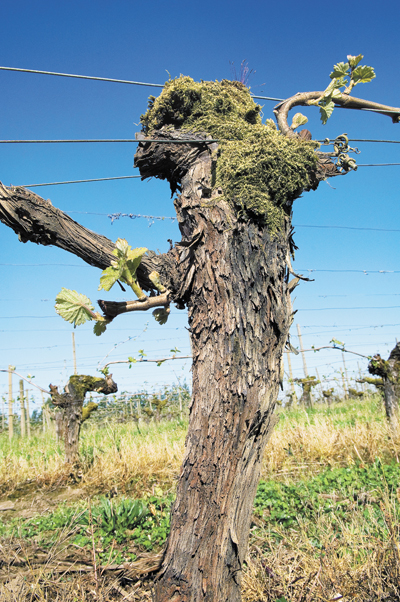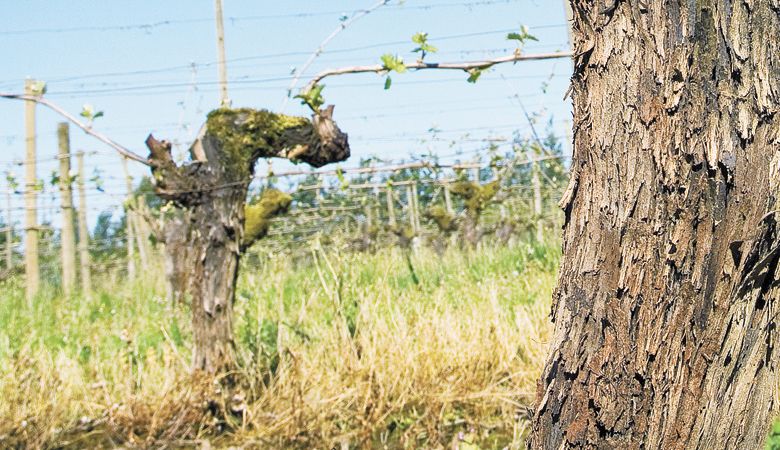Old-Vine Oregon
Age counts in Pinot Noir plantings
There’s no consensus or legal definition of “old vine” Pinot Noir. Wikipedia states: “In a place where wine production is longstanding, it often means a wine whose vines are 30 to 40 years old.”
Although most winemakers believe the term “old vine” should be regulated, the debate continues. At issue is in the perception by many consumers that old-vine wines are superior.
In reference to Oregon vineyards, Paul Gregutt writes in Wine Enthusiast: “There’s considerable agreement that 35 years is a fair age to be called old vines.” He quoted Eyrie’s Jason Lett as “preferring to call the beginning at 45 years.” In my writings, I use the cutoff year of 1980 (40 years) because the two decades prior were a period of landmark Pinot Noir plantings in Oregon.
There are variations among different varieties in considering the use of “old vine.” For example, Pinot Noir vineyards more than 20 years are often considered old while vineyards planted to varieties like Syrah and Zinfandel worldwide would not be considered old after only two decades. Although grapevines can potentially survive 50 to more than 100 years of age, there are precious few old-vine Pinot Noir vineyards in Oregon that are still productive.
Age is a valuable commodity in Pinot Noir vineyards since the aged vine has more potential for reflecting the essence of a vineyard, or at least mirroring a unique character of the site. Beyond this observation, there is a raft of generally accepted observations among winegrowers and winemakers regarding whether vine age makes a difference in the character of Pinot Noir wines, as well as how vine age affects viticultural and winemaking decisions:

• Old-vine Pinot seems to age better.
• Old-vine wines can be more layered, nuanced, complex, long on the palate and more interesting. They are potentially less overtly fruity but more complete. Pinot Noir from newer vines tends to be more vibrant, expressive and exuberant with more grip from tannins.
• Old vines are more constant, yielding smaller berries with a higher ratio of solids to liquid.
• Old vines have deeper roots and can tap into moisture during droughts.
• Old vines generally produce grapes with physiological ripeness at lower Brix. In contrast, new vine grapes ripen more quickly, accumulate sugar faster and usually have less acidity.
• Old vines become infected with viruses over time, leading to lower yields and wines with less color.
• Old-vine and young-vine wines can be similar if yields are tightly controlled.
• Old vines experience more haphazard growth with sometimes a hybrid mix of cordon and canes, requiring more work to farm, more individual attention, a more experienced vineyard crew and, as a result, can be more costly.
• Old-vine wines have a special quality that reflects the fact that whoever planted the vines originally did it properly and the vines have survived. The vineyard is special as a result.
• Old-vine age can be difficult to taste in some Pinot Noir wines as site can trump vine age.
• Old vines lack the benefit of better rootstocks and clones, and more sophisticated viticultural technology. Many old vines are planted on their own roots rather than certified rootstock and, thus, more vulnerable to phylloxera and viruses.
• Old-vine grapes and young-vine grapes are, in general, not vinified in a significantly different manner other than some winemakers choose to limit or avoid new oak in younger-vine wines. Yet, the adage is not true that old-vine grapes “can take more oak.”
When pressed to say whether old vines make better Pinot Noir than young vines, many winemakers believe they do, while others say, “they can at least some of the time.” Everyone concedes that old vines matter. Wine and Spirits columnist Beppi Crosariol summed up the superiority of old-vine wines many years ago: “It’s a difference you can taste. Old-vine wines deliver textural richness and layered flavors that build rather than trail off after the up-front fruit fades away. It’s analogous to the warm, rich tone of an old violin versus the brighter timbre of new wood.”
Pinot Noir vineyards planted in Oregon before 1980 were almost all established with the Pommard and Wädenswil clones and the Coury selection — often incorrectly referred to as a “clone” — all were cultivars originally from France. Historic planting records for some vineyards established prior to 1980 are not specific, so the exact source of the originally planted scion material remains unknown. Dijon clones were not introduced into Oregon until the late 1980s and not widely planted until the 1990s.
There were not many Pinot Noir vine options before 1980, and the perception of distinct clones of Pinot Noir began coming into focus in Oregon at that time. In the 1970s, many California winegrowing pioneers smuggled select Pinot Noir cuttings — known as “suitcase” selections — from Burgundy into the United States, bypassing the regulatory certification process managed by the Foundation Plant Materials Service (FPMS) at California’s UC Davis. The only suitcase selections known to be brought directly into Oregon from France were the Coury selection by Charles Coury and AS2 or faux 828 by Gary Andrus. Faux 828 was planted throughout California rather than Oregon because of Oregon’s strict laws against planting non-certified Pinot Noir cultivars.
The following vineyards still have producing Pinot Noir vines in at least one block planted before 1980. Look for these vineyards when searching for Oregon old-vine Pinot Noir wines.
In the Umpqua Valley, HillCrest Vineyard contains producing Pinot Noir vines that date to 1961, 1962 or 1963, and are among the first post-Prohibition Vitis vinifera planted in Oregon. In the Willamette Valley, the original Pinot Noir plantings at The Eyrie Vineyards date to 1965 (started at a nursery established by David Lett in the Willamette Valley and moved to the present vineyard site in 1966); these vines are still in production.
Other Willamette Valley old-vine Pinot Noir vineyards include: Abetina Vineyard (Ponzi), Ana Vineyard, Arcus Vineyard (Archery Summit), Bethel Heights Vineyard (Flat Block, West Block and Southeast Block), Breaker Vineyard, Brooks Estate Vineyard, Chehalem Mountain Vineyard, Cooper Mountain Old Vines Vineyard, David Hill Estate Vineyard, Dion Vineyard, Durant Vineyard (Bishop Block), Elk Cove Winery Estate Vineyard, Five Mountain Vineyard, Hyland Vineyard, Knudsen Vineyard, Le Pavillon Vineyard, Lia’s Vineyard, Maresh Vineyard, Medici Vineyard Pommard Block, Olson Estate Vineyard, Ruby Vineyard, Quarter Mile Vineyard (Adelsheim), Sokol Blosser Vineyard (Twelve Row Block), Sunnyside Vineyard, Tualatin Estate Vineyard, Tyee Estate Vineyard, Wahle Vineyard, Weber Vineyard, White Rose Estate Vineyard, Wirtz Vineyard (David Hill), Winderlea Estate Vineyard and Windhill Vineyard (Elk Cove).










